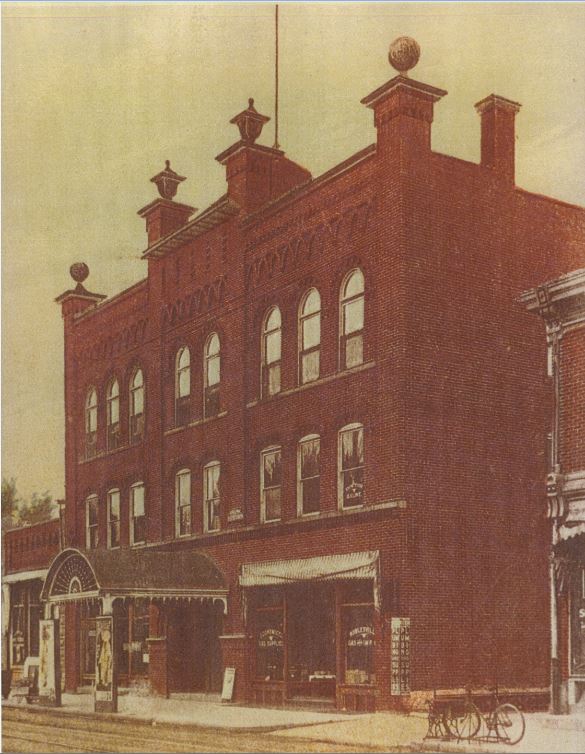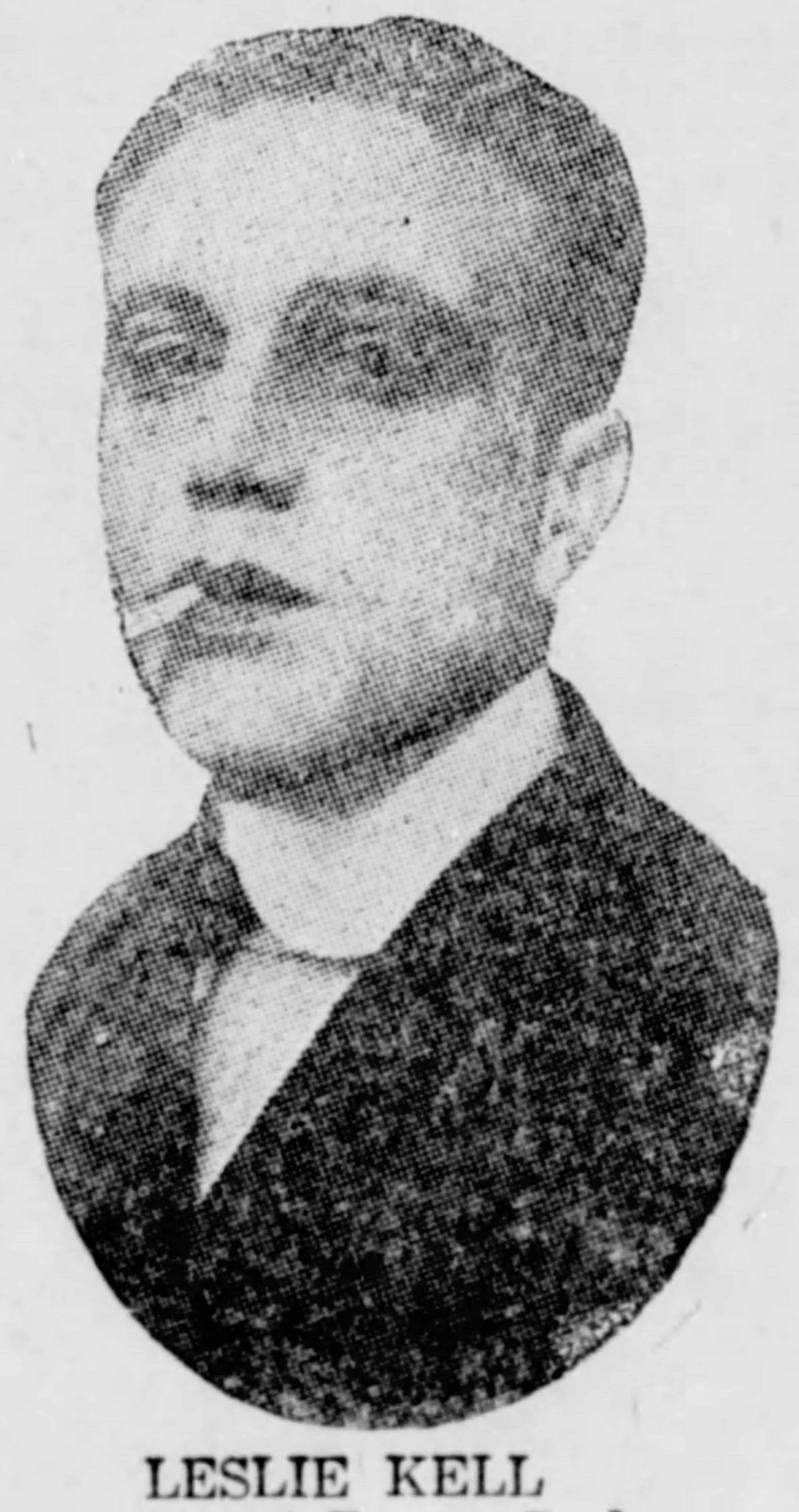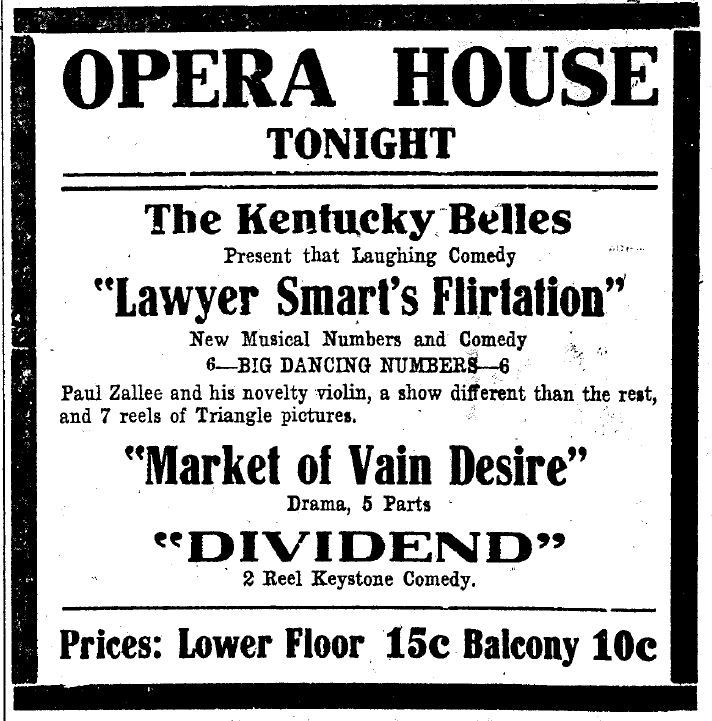 Celebrating the Holidays 100 Years Ago – A Double Wedding
Celebrating the Holidays 100 Years Ago – A Double Wedding
By: David Heighway, Hamilton County Historian
There are many ways to celebrate the season – some people add to it with a wedding. A century ago, some actors in Noblesville expanded on this by doing a double wedding.
For many years, the main performance venue in Hamilton County was the Wild Opera House. Traveling troupes would come to Noblesville to do shows there for perhaps a week. One such troupe was Paul Zallee’s Kentucky Belles who played the house from December 25 to December 30, 1916. (They are not to be confused with George Morton’s Kentucky Belles, or Wiles’s and Nelson’s Kentucky Belles, or the Nichols Sisters who were known as the Kentucky Belles. Lack of originality in entertainment is not a new thing.)
 Zallee’s group of performers was made up of twelve members with “special scenery and electrical effects, big dancing chorus, pretty girls, [and] clever comedians”. While the troupe was here, they performed the comic plays “Lawyer Smart’s Flirtation”, “The Matinee Girl”, and “Hotel Topsy-Turvy”. These shows were just insubstantial fluff meant to highlight the songs and dancing, as well as individual turns such as manager Paul Zallee and his novelty violin, and featured comedian Leslie E. Kell. Each show was followed by a silent movie. The Opera House provided a six-piece orchestra and a stage crew.
Zallee’s group of performers was made up of twelve members with “special scenery and electrical effects, big dancing chorus, pretty girls, [and] clever comedians”. While the troupe was here, they performed the comic plays “Lawyer Smart’s Flirtation”, “The Matinee Girl”, and “Hotel Topsy-Turvy”. These shows were just insubstantial fluff meant to highlight the songs and dancing, as well as individual turns such as manager Paul Zallee and his novelty violin, and featured comedian Leslie E. Kell. Each show was followed by a silent movie. The Opera House provided a six-piece orchestra and a stage crew.
The Kentucky Belles had started their tour in Keokuk, Iowa, and went from there to Jefferson City, Missouri, then to Columbus, Indiana, before arriving in Noblesville. Troupes like this would use the Julius Cahn-Gus Hill Theatrical Guide to get information on the venue and the town.
This directory has information about the Wild Opera House that is still useful today, although for some reason, the theater had stopped giving updated information after 1910.
The Cahn-Hill Guide recommended staying at the Houston Hotel which shared an alley with the theater. The other hotels were the Park House and the Reed House on South 8th Street and the Central Hotel on West Vine Street. (The Central was not a nice place – it was right on the railroad switching yard and next door to a notorious brothel.) When the male actors weren’t rehearsing or performing, they usually spent time at one of the saloons across the alley to the north of the theater. There are stories that they would occasionally do this during intermission and that the last half of show could be a little wobbly.
 However, after the show on December 26th, four of the performers – Elinor Slattery and Leonard Wakefield, and Loretta Koch and Leslie E. Kell – went instead to the home of Rev. Fred Cochran, the minster of the Calvary Baptist Church (which is still at the corner of 9th and Cherry Streets). Reverend Cochran’s home was on 8th Street and he evidently didn’t mind being awakened late at night by a group of actors. The fact that he was retiring on December 30 might have had something to do with it.
However, after the show on December 26th, four of the performers – Elinor Slattery and Leonard Wakefield, and Loretta Koch and Leslie E. Kell – went instead to the home of Rev. Fred Cochran, the minster of the Calvary Baptist Church (which is still at the corner of 9th and Cherry Streets). Reverend Cochran’s home was on 8th Street and he evidently didn’t mind being awakened late at night by a group of actors. The fact that he was retiring on December 30 might have had something to do with it.
The Noblesville Ledger said that “Noblesville is becoming a favorite place for actors to wed. Within a week, three couples, members of traveling show companies, have been married here”. It’s not known who the other couple was. As far as this double wedding was concerned, the Ledger went on to say “All are actors and nice appearing young people”. The story was also picked up by the Indianapolis News.
On December 31, the troupe packed up their equipment and continued on with the tour. They stopped next in Piqua, Ohio, then went on to New Philadelphia, Ohio, and Greenville, Pennsylvania, and proceeding on until the last extended runs of the tour in Little Rock, Arkansas, and Oklahoma. Two more members of the troupe were married in Haskell, Oklahoma.
As far as the success of the couples went, the Slattery – Wakefield marriage held together and the two of them eventually retired from the theater and settled in Illinois. Unfortunately, as with many showbiz marriages, the Koch – Kell relationship didn’t last. It may have been because Leslie Kell was the featured comedian while Loretta Koch was just a chorus girl. By 1921, Kell was leader of the troupe. However, it didn’t last and he went his own way, remarrying in 1925. Loretta continued to tour with troupes organized by her fellow actors.
So Noblesville was a part of a backstage drama back in the heyday of traveling theatrical companies. The Wild Opera House was probably center stage for a lot of stories like that and we will find more as we continue to research.
